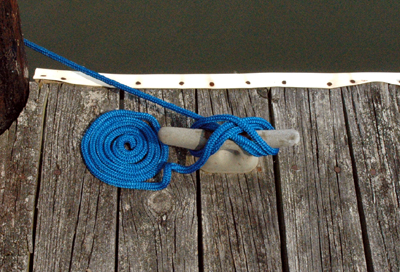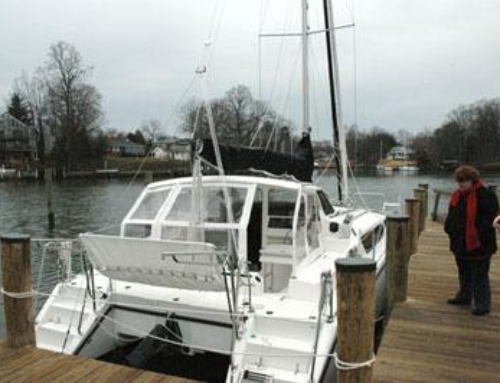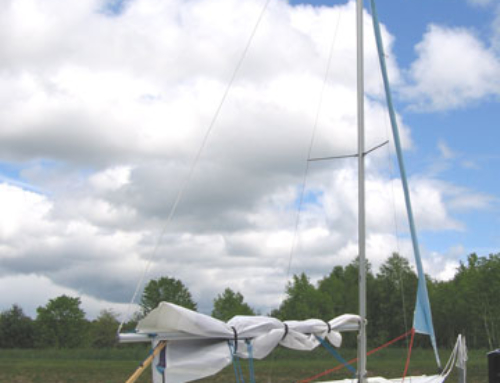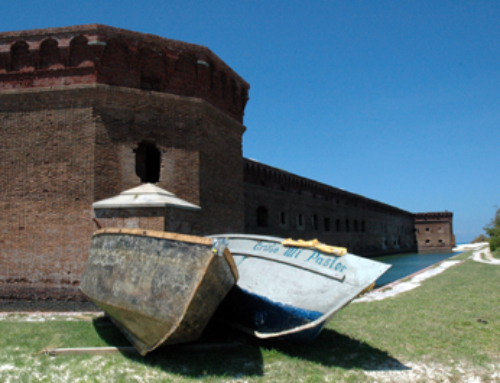There’s value in sailors learning how to properly tie a knot because a bad thing can happen with poorly tied knots: The boat could drift away.
A short walk down a long pier on Cayuga Lake revealed an assortment of knot-tying techniques, mostly sloppy and dangerous.
Wrapping a line (that’s what sailors call ropes) around and around a cleat until it’s a mass of cordage won’t guarantee that the boat is secure to the dock. Neither will slipping a spliced line through the eye of a cleat and then looping it over an ear. At best, this is a temporary solution.
To secure the boat to a dock or secure a line to the boat, most people use the cleat hitch. To do this, first take the line to the ear of the cleat furthest from where the line comes from the load. Make one wrap around the base of the cleat and then start a figure eight across the top of the opposite ear. Finish with a half hitch turned under so that the line is coming away from the cleat in the opposite direction from which it came.
Once the line is secure, it’s inappropriate to leave a tangled mass of lines. Leftover line lying haphazardly on the dock can trip people, or the line can fall into the water and get wet. It also can get knotted up preve
There are three recommended methods for stowing extra line on a dock:
- The first is to coil it in a flat spiral. This method is tidy and uses minimal space. However, some boaters are concerned that leaving a line coiled results in mildew and sun damage.
- The second method is to form a daisy chain. Boaters do this by making a small loop close to the cleat then pulling a length of the line through the loop making a second loop, and so on until the line ends. This method allows air to circulate around the line, hopefully preventing mildew. Daisy chains easily fall out and look decorative on a dock.
- The third method is to coil the remainder and hang it from a hook on a nearby piling.
Owning and sailing a boat is an expensive hobby so take a few extra minutes and take care of the equipment.

Not only is a properly tied cleat hitch secure, it is attractive. The extra line is coiled next to the cleat.
.jpg)
This boat is in danger of drifting away. The line is loosely and incorrectly wrapped around the cleat.
.jpg)
Here is an example of properly tied cleat with the extra line coiled on the dock.
.jpg)
The extra line on this dock has been tidily formed into a chain to prevent mildew.
.jpg)
This line is not properly tied and because the extra line has been wrapped around the cleat, it will take extra time to release it.
.jpg)
This is an example of an improper cleat hitch, and despite the fact that the line is balled around the cleat, it will not guarantee security.













